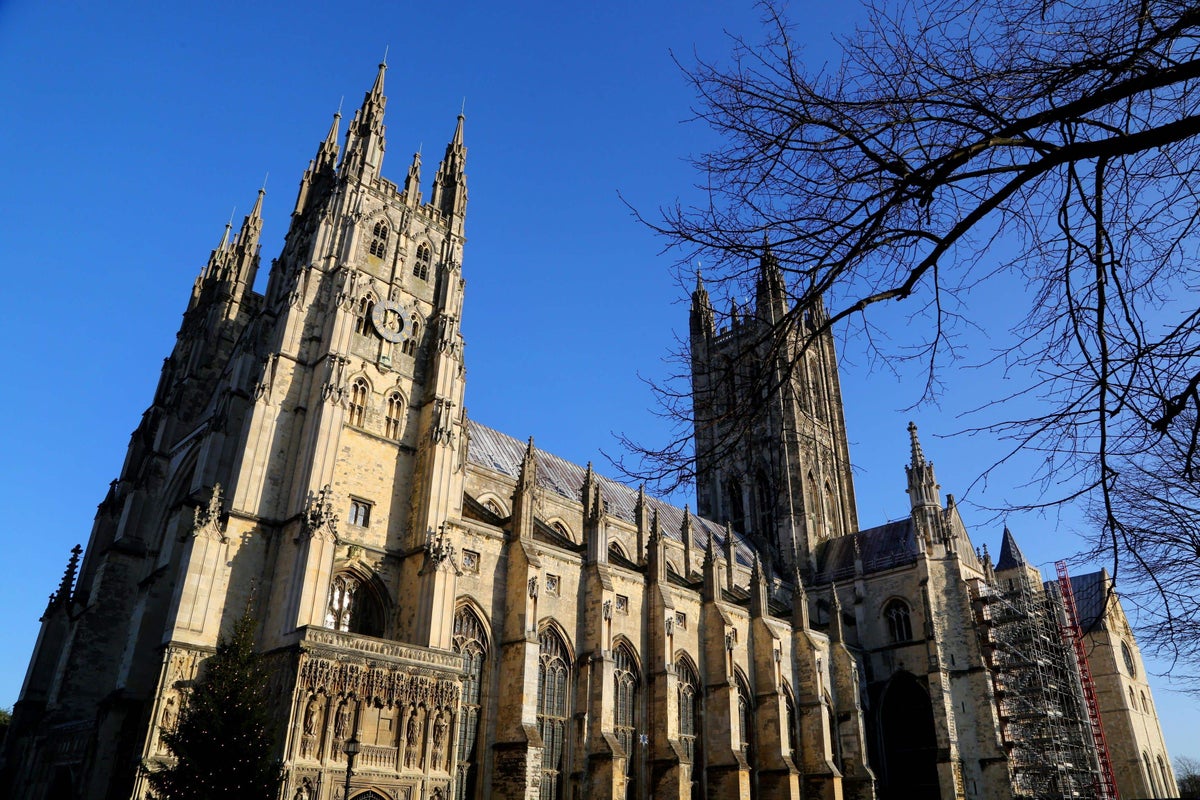
The new archbishop of Canterbury will be named on Friday, with many hopeful a woman will be appointed to the role for the first time in the Church of England’s history.
The Church has been without someone in the top job for almost a year after Justin Welby resigned over a safeguarding scandal.
A member of the Church of England’s parliament has said failing to appoint a woman to the centuries-old role for the first time would be a missed opportunity.
Various names have been reported as having been in the mix, among them a former refugee.
While no shortlist of candidates was published, Bishop of Chelmsford, Guli Francis-Dehqani, has been seen as a favourite for the role.
She fled Iran with her family as a teenager in the wake of the Iranian revolution in 1980 and has previously discussed her own story and how she has “a sense of the real trauma that many asylum seekers have experienced”.
Others tipped for the role include the Bishop of Gloucester the Rt Rev Rachel Treweek, who made history in 2015 by becoming the first female diocesan bishop and the first female bishop in the House of Lords.
Bishop of London Dame Sarah Mullally, a former chief nursing officer for England, has also been mentioned as a possibility.
Men thought to be in the running include the Bishop of Bath and Wells, Michael Beasley, a former epidemiologist who was a member of the Church’s Covid-19 task force during the pandemic.
The Bishop of Sheffield, the Rt Revd Dr Pete Wilcox, who describes himself online as a “sports fan & Newcastle Utd nut”, has also been mentioned in reports.
Women were first ordained priests in the Church in 1994, while the first female bishop appointments followed 20 years later in 2014.
Speaking ahead of Friday’s announcement, Professor Helen King, an elected lay member of the Church of England General Synod, otherwise known as the Church’s parliament, said she is hopeful for a female to be appointed.
She told the PA news agency: “It’s been 10 years since we’ve had women bishops, and that means we’ve got women who have the experience to be archbishop.
“So I think it would be a missed opportunity, but the Church of England is perfectly capable of missing opportunities.”
“I wouldn’t be surprised (if it’s not a woman) but I hope very much it is.”
Andrew Graystone, a long-time advocate for survivors of Church abuse and victims of safeguarding failings, said it would be a “historic moment for the church, and a huge opportunity” if a woman was appointed to the role.
He warned whoever is chosen has a challenging road ahead of them.
He told PA: “The new archbishop will be faced with declining church attendance, bloated management structures and clergy squabbling over what people do in the bedroom.
“But the biggest challenge for the new archbishop is to restore trust after a decade of abuse scandals.”
Former archbishop of Canterbury Justin Welby formally stood down in January over failures in handling an abuse scandal, having announced his intention to resign three months earlier, in November 2024.
Archbishop of York Stephen Cottrell took on most of the responsibilities in the interim, and was one of the voting members of the body charged with choosing Mr Welby’s successor.
The Crown Nominations Commission (CNC), chaired by Lord Evans of Weardale, a former director-general of MI5 security service, had to agree to the new appointment by a two-thirds majority vote.
Following agreement, in line with tradition, the process involves a name being given to Prime Minister Sir Keir Starmer and then passed to the monarch.
While, technically, the King is head of the Church of England, the person holding the role of archbishop of Canterbury is the most senior bishop and is the spiritual leader of the Church and the worldwide Anglican Communion.
The next archbishop does not legally take on the role until a confirmation of election in January, and an enthronement service comes later, after they have paid homage to the King.
